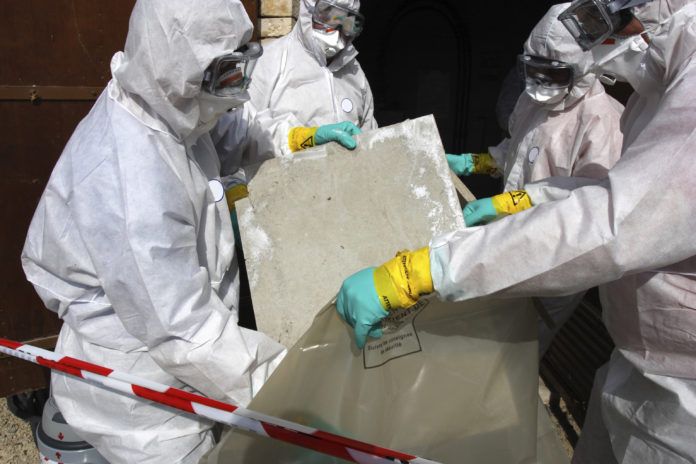The Health and Safety Executive (HSE) will be assessing how schools in England, Scotland and Wales are managing the risks from asbestos and how they are meeting the ‘duty to manage’ requirements under Regulation 4 of the Control of Asbestos Regulations 2012 from September.
The government body estimated that asbestos may still be present in 300,000 non-domestic buildings and many more homes, despite the long-term efforts to remove it. With this in mind, MPs have now called for a 40-year deadline for all asbestos to be removed from public and commercial buildings, including schools.
Asbestos was commonly used across the construction industry between 1930s and 1980s and with many used buildings (and school) being built before 2000, 75% of British state schools have been found to contain the material.
In school buildings, the most common uses of asbestos were in:
- Insulation lagging, particularly around pipework, boilers and ducts
- Insulating boards, particularly ceiling tiles
- Asbestos cement products
- Bitumen
- Floor tiles
- Textured paints and coatings.
Legal responsibilities for asbestos management in schools
The Health and Safety at Work Act 1974 and Management of Health and Safety at Work Regulations 1999 place a legal duty on employers to prevent exposure and assess the risks posed by asbestos.
More specifically, The Control of Asbestos Regulations 2012 states that the responsibility for maintaining premises that may contain asbestos lies with the duty holders. In schools, this can be classed as the employer or the governing body or the responsibility may be shared but also is defined as anyone who has the responsibility for the maintenance and/or repair of the building.
Duty holders must:
- Confirm what you already know about the ACMs on your premises, and review how you are currently managing them.
- Prevent work on your premises that may disturb the fabric of the building until measures to control the risks have been implemented.
- Carry out regular inspection for damage and disturbance of materials and take immediate action to control these.
- Develop a strategy for compliance.
- Carry out a risk assessment of your ACMs to set priorities for management.
- Develop a site-specific asbestos management plan.
- Monitor and review the asbestos management plan every 12 months.
Duty to manage asbestos
Duty holders are expected to survey their building, create a register of ACMs and write an asbestos management plan that details the procedures for monitoring the condition of ACMs. The assessments which HSE inspectors will be carrying out will require a copy of the asbestos management plan.
The asbestos management plan is a vital document which registers and outlines the ways in which asbestos will be managed across a particular property, and how people using the site will be kept safe from exposure to the fibrous mineral. It should be clear, simple and easily accessible, and duty holders will need to ensure that it is reviewed regularly. The HSE also states that all schools must have a site-specific asbestos management plan, and that key stakeholders should be familiar with it.
Risks from asbestos in schools
The most likely way that ACMs will create a risk in schools is when they are disturbed or damaged through maintenance, repair or construction activities. School caretakers are considered to be at high risk of asbestos exposure due to the nature of their work. If asbestos is disturbed during any of these activities, there is a risk that the fibres will be released and create a risk to other occupants of the building, such as teachers and students.
In addition, within a school environment, asbestos can be disturbed through activities of the students, such as the movement of table and chairs (rubbing against walls for example), kicking and throwing balls and in some cases vandalism. Given the age of many school buildings, the passing of time also increases the possibility of the general degradation of building materials.
If asbestos is in a good condition and is unlikely to be disturbed or damaged, it will not pose a significant risk to health as long as it is properly managed. It is, however, strongly recommended that teachers and children should not undertake activities that damage ACMs, such as pinning or tacking work to insulating boards or ceiling tiles.
Asbestos Awareness training
Asbestos awareness training is vital for both school staff and contractors. As aforementioned, caretakers are often the most at risk, so asbestos awareness training would be a requirement for them, particularly as they carry out small maintenance jobs and activities that could potentially disturb and damage the fibrous mineral. All third-party contractors undertaking building and refurbishment works which could disturb ACMs should also be asbestos awareness trained, with the school instructing these works being required to check this as part of their engagement process.
>>Read more about the dangers of asbestos here.




